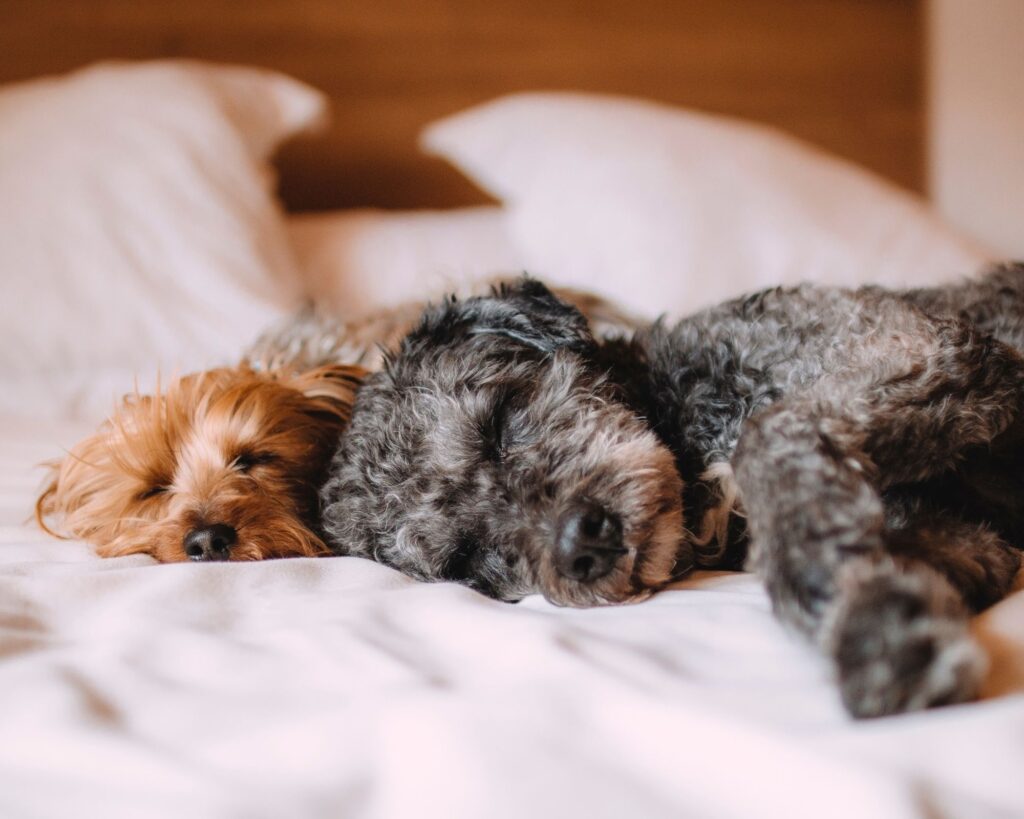WELLNESS, LIFESTYLE
Detox Your Sleep
7 Toxic Chemicals in Your Bedding & Safer Alternatives
Chlorine bleach and synthetic dyes? No thank you!
We spend approximately eight hours a night sleeping, which is one-third of our lives. Given that sleep is when the body does most of its repair and rejuvenation work, it makes sense that our mattress and bedding materials should be non-toxic, right?
We think so!
That’s why today we’re sharing seven of the most common toxic chemicals in your mattress and bedding, plus how to make the switch to natural alternatives to create a safer, healthier sleep environment for you and your family.

How clean are your sheets?
The textile industry uses lots of toxic chemicals to turn coarse fibres into soft, lustrous, smooth sheets, which means while your bedding might appear perfectly snug and inviting, your sheets could actually be causing you harm!
Most people don’t realise that conventional sheets go through a crazy amount of processing before they end up on your bed. From washing to sizing, bleaching, dying, being treated with detergents, optical brighteners, biocides, wetting agents, lubricants, solvents, stabilizers and emulsifiers…the list goes on, phew!
Some of the most common toxic chemicals found in conventional sheet sets include:
1. Formaldehyde
Sheets—especially cotton sets—that are labelled as ‘wrinkle-free’, ‘no wrinkle’ or ‘no iron’ typically contain a formaldehyde finish, which can cause a sore throat, teary eyes, blocked sinuses, a runny nose and sneezing. Not only that, but formaldehyde has also been shown to cause cancer!
2. Pesticides
Cotton is one of the most heavily sprayed, pesticide-laden crops in the world. While some of these nasty chemicals will wash out of conventional cotton sheets, they’ll never be 100% pure. Which means every night, you’ll be sleeping in a bed full of harmful chemicals. Ew, no thank you!
3. Colour fasteners and dyes
We all love bright, beautiful colours. But what if those hot pink sheets and navy blue pillow cases were interfering with your immune system, hormones, fertility and respiratory system? What if they increased your chances of getting kidney, bladder or liver cancer? Spoiler alert: they are!
4. Chlorine bleach
Many conventional white sheets are bleached with chlorine-based chemicals to get that crisp-white ‘hotel look’, which so many people love. But by choosing these sheets, you could unknowingly be exposing yourself to one of the most toxic chemicals on earth. Sleeping on bleached sheets can irritate your skin. And on those hot summer night’s when sweating is involved and your pores are naturally more open, the toxins can be absorbed into your skin.
Tips for choosing a safer bedding alternative:
- Choose 100% GOTS-certified organic cotton sheets to avoid the effects of pesticides and toxic fabric treatments.
- Opt for naturally dyed instead of synthetic coloured sheets. Not only are they safer, but they also happen to be eco-friendly with high biodegradability and low waste.
What is your mattress made of?
Unfortunately, the mattress industry offers little transparency about the materials and processes used in the mattress manufacturing process.
Mattresses do have labels, but they often contain confusing terms that are difficult for the average consumer to understand. Legally, mattress brands don’t have to disclose the chemicals in their mattresses either—even those that are labelled as ‘natural’, ‘green’ and ‘eco’!
This makes it incredibly difficult to find out exactly what’s in your mattress. But what we do know is that most conventional brands use various types of ‘barrier fabrics’, like cotton treated with boric acid or rayon treated with silica.
Some of the most common toxic chemicals found in conventional mattresses include:
5. Petrochemicals (derived from petroleum)
The majority of mattresses on the market today are made from polyurethane foam with petroleum-based chemicals. Studies show that these toxic petrochemicals can ‘off-gas’ volatile organic compounds (VOCs), which are responsible for skin irritation and respiratory problems like asthma. One study even found that baby crib mattresses contain more than 30 VOCs! *shivers*
6. Flame retardants (PBDEs)
In most countries, mattresses are required to meet flammability laws, which means they’re treated with toxic PBDEs. Research shows that these chemicals are associated with hormone disruption, harmful neurodevelopmental effects in babies and increased risk of cancer. Yikes!
7. Phthalates
Phthalates are found in the waterproofing covers of mattresses (particularly cot and baby bassinet mattresses) and also in added fragrances. These nasties have been linked to allergies, fertility issues, increased risk of testicular cancer and childhood asthma. Some phthalates can also ‘off-gas’, especially when the temperature increases. For example, when your body heat transfers to the mattress.

Tips for choosing a safer mattress alternative:
Look for GOTS or GOLS-certified mattresses, which signify at least 95% certified organic textiles and latex. Mattresses with these labels have a substantial list of banned substances making them a healthier choice.
Look for 100% natural latex foam, which is extracted from rubber trees and isn’t treated with as many chemicals as polyurethane. Note: synthetic latex is not the same thing!
Avoid scented mattresses and toppers with added chemical fragrances and antimicrobial treatments. You can create the same effect with your own 100% organic essential oils.
Choose waterproofing covers made with pure food-grade polyethylene, which does not contain any phthalates or plasticizer additives.
Now that you know what to look out for, remember to check your labels and see what products need to be thrown out or replaced. #winning
Did you enjoy this article? Discover more ways to live a healthy lifestyle, business, and career by reading more here.

Looking for a guide to help you succeed as a professional? Schedule a call with a Morning Tea Coach today and transform your life.

meet the blogger
I'm Gabby
Business & Career Expert, Mentor and Creative Entrepreneur
Instead of prescribing what I think you should do, I help you find what works for you.
GROW PERSONALLY & PROFESSIONALLY

START OR GROW A BUSINESS
Badass Business Program
Take my proven strategies to build the creative business of your dreams.

MAKE MONEY DOING WHAT YOU LOVE
Career Makeover
Learn every detail about starting a new career or changing careers and become a value-driven professional.




